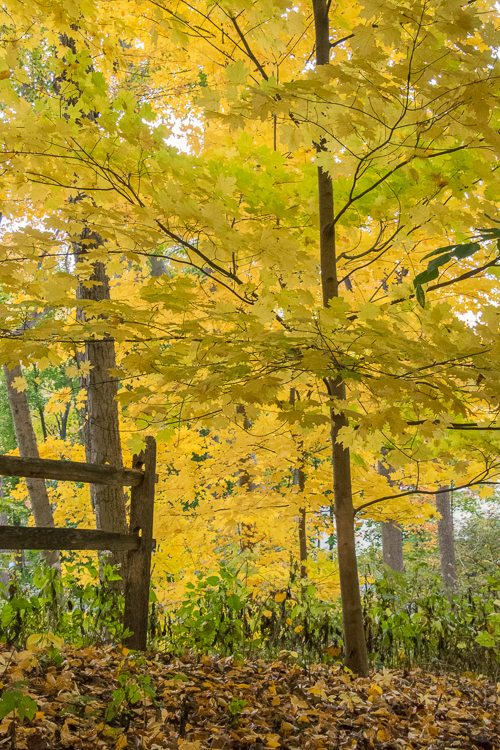Forest restoration is the process of bringing woodlands back to health. It is not a quick fix; it takes planning and a great deal of patience. Restoration is not just about picking and planting the right trees. Restoring woodlands to health involves a variety of activities including planting trees, re-establishing a certain mix of plant species, and controlling invasive plants where they compete with desirable vegetation. It’s about the big picture; looking at everything that lives in the woods and restoring the entire ecosystem.
That ecosystem includes the trees, understory and herbaceous plants, the soil and all the organisms that live in it, any bodies of water and the plants and animals that live there, and local wildlife. Each of these elements plays an important role in the health of the forest. Understory and herbaceous plants protect the soil from erosion and provide wildlife with food. The soil and water nourish the trees. Wildlife helps add movement to the nutrient cycles of the forest, organic material to the soil, and even assists in the propagation of the trees and other desirable plants. If each of these elements are balanced and healthy, the forest overall will be healthier and our restoration efforts will be more successful.
The challenging issues we are addressing in 2023 for the Arboretum’s forest are at the understory and herbaceous layers. During the summer of 2021, a tropical cyclone dropped a large tree limb on one of the corners of our deer fence, bringing down just over 100 feet of fencing. Because of the labor and supple chain issues due to the Covid 19 pandemic, it took a full year to repair the fence. During the course of that year, we had between two and seven deer on property devouring and decimating our understory and herbaceous layers. Once the 100 foot gap was repaired in 2022 we were able to complete our deer drive and free the forest from the constant pressure of deer foraging. We then began the process of accelerating our restoration efforts of the sub-canopy layers.
As of June 5, 2023, we completed the construction of three wildflower/native plant nurseries. All three nursey plots were then enclosed in a mini-deer fence to protect the plants from any unexpected deer intrusions. There is a plot in Wildflower, a second next to the Punchbowl, and the third plot is in Fawn Dell. Each plot is in a different micro-cline and was planted accordingly. Wildflower is planted with shade tolerants that can deal with damp soil conditions. Punchbowl has ground cover plants that are drought resistant. The Fawn Dell plants need to be both shade and drought resistant. We know we picked our new plants well because we had native pollinators already landing on the flowers during the planting process. The plan is to let the plants thrive within the plots and fill them out. If they decide to spread from within the plots to other parts of the Arboretum they will not even have to ask for permission. If it gets crowded within the nurseries, we will build new plots and transplant. The plan is to have the nursery plots revolve around the Arboretum’s forest for the next 5-7 years. At that time, we will reassess the health of the herbaceous and understory layers.
We still have many populations of invasive plant species in the woodlands and our volunteers work continually to keep those populations under control, and where possible, eradicate them. Because most invasive species of plants are spread by birds and wind dispersal of seed, we will have to be continually vigilant to prevent their spread in the Arboretum. We will also have to monitor the woodlands for evidence of invasive insect and pathogen species, such as the Emerald Ash Borer and many tree diseases. On a historical note, it was a non-native fungus-the Chestnut Blight that killed the many native chestnuts that grew in the woodlands before Cora Hartshorn acquired the land.
A truism of stewardship and conservation is the efforts never end while the devastating effects of extinction only need to happen once. But this is a challenge set to us by Cora Hartshorn and we at the Arboretum gladly accept it. Thank you in advance for your kind donations. They allow us to continue this important work.


